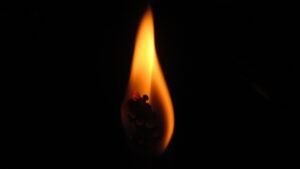 When a historical industrial building is restored and repurposed to be used as a public place such as a museum or visitor center, the restoration team is faced with the dilemma of removing hazardous buildups on the building walls while preserving historical patina.
When a historical industrial building is restored and repurposed to be used as a public place such as a museum or visitor center, the restoration team is faced with the dilemma of removing hazardous buildups on the building walls while preserving historical patina.
LCS Laboratory was approached by a consulting company working on the restoration of a historical building that was used as a smithy and then as a metal shop. Heavy soot and pitch deposits are present on the brick-and-mortar walls, along with wooden walls and beam ceilings that require testing. There are four consecutive parts in this and similar projects:
- Selection of hazardous chemicals that might be present on the site and should therefore be targeted in this study. After discussions with the client and taking into account the history of the building, LCS Laboratory suggested the use of non-destructive techniques to test walls for heavy metals including mercury and arsenic, polyaromatic compounds (PAH), which are common components of wood and coal pitch, soot, oil, and crystalline silica in the form of quartz and cristobalite. Wooden structures should be tested for mould. The structural components of the dust can be identified using polarized and phase contrast microscopy.

- Collection of samples. The samples are collected by the client using various techniques:
- Wipe Samples: Good for oil, PAH, metals, and soot.
- Loose dust can be collected by vacuuming the surface: Good for loose particles. It can be combined with gravimetric analysis so that in addition to PAH or soot, the client would know how much dust was collected, and therefore the concentration of PAH in the dust. This technique is good for total dust and for microscopy samples.
- Tape lifts: Good for mould and dust identification by microscopy.
- Bulk materials like pieces of mortar, brick: Good for mould identification, crystalline silica exposure assessment, and analysis of metals absorbed by brick and plaster.
- Laboratory Analysis is performed by LCS Laboratory in London, Ontario, Canada. When necessary, we collaborate with accredited Canadian laboratories to deliver the best results. Our standard turnaround time is 10 business days.
 Discussion of the results. The client uses laboratory results to prepare a summary report for the restoration team. There are no regulations for surface contaminations in North America, except for lead deposits. We have learned from our clients that our results are used to select Personal Protective Equipment (PPE) if a hazardous material is detected. Sometimes we conduct two rounds of testing, where the samples are collected at the same location before and after cleaning, to demonstrate the efficiency of remediation.
Discussion of the results. The client uses laboratory results to prepare a summary report for the restoration team. There are no regulations for surface contaminations in North America, except for lead deposits. We have learned from our clients that our results are used to select Personal Protective Equipment (PPE) if a hazardous material is detected. Sometimes we conduct two rounds of testing, where the samples are collected at the same location before and after cleaning, to demonstrate the efficiency of remediation.
If you believe that our experience and professional level can add value to your study, we are here to assist. Please contact us to discuss this or any other project. Thank you for your interest.











